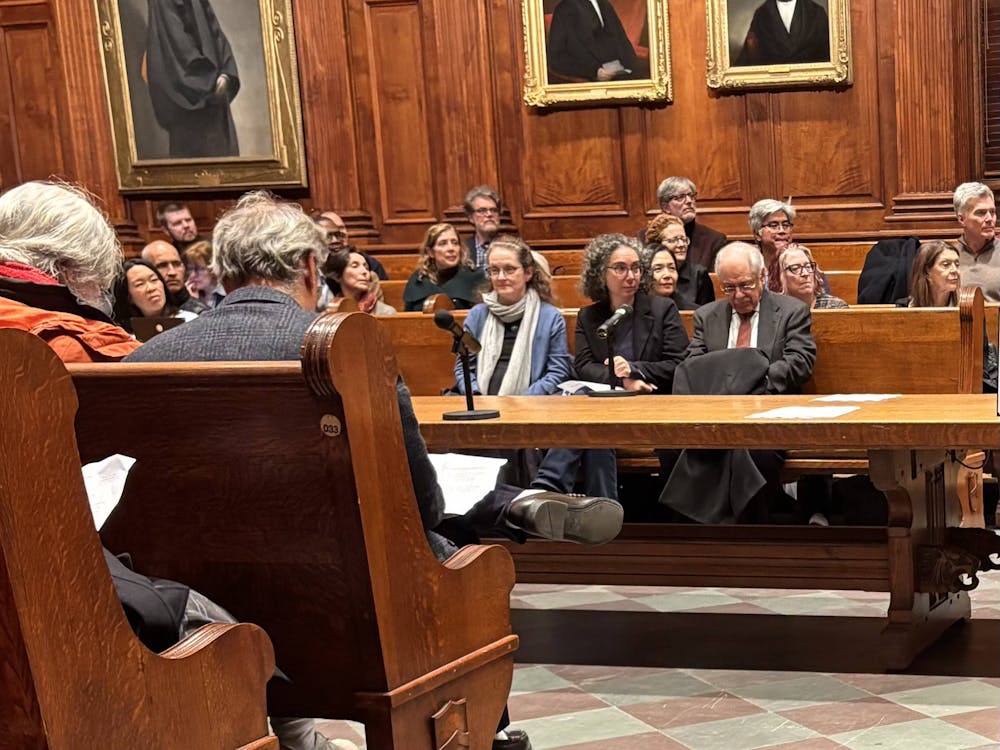A new lawsuit was filed this month against the Regional Planning Board of Princeton, challenging its 9-1 vote in favor of the University’s plans for the Arts and Transit Neighborhood on Dec. 18.
Filed on Feb. 5, the last day possible to object to the Planning Board’s approval, the lawsuit names six plaintiffs, including political journalist Chris Hedges, according to a Feb. 5 Planet Princeton article.
Attorney Bruce Afran will represent the plaintiffs, all except one of whom reside in Princeton. Attorney Edwin Schmierer will represent the town and Planning Board, which have supported the University’s plans for the neighborhood.
Before consolidation, the Township and Borough generally approved of the construction of an arts center as a part of the town’s master plan — a set of guidelines adhered to by the Planning Board — but some residents have opposed the University’s plans to relocate the Dinky 460 feet southward.
“No one’s opposed to the arts plan in itself, but the way it’s designed is very damaging to the community,” Afran said.
Afran’s lawsuit is the first challenging the Planning Board rather than the University and focuses on specific objections rather than the legal rights of the University. It argues against the Planning Board’s decisions on the basis of concerns about pedestrian safety and the historic nature of the buildings to be demolished.
The lawsuit also objects to the construction of a ramp connecting the station and the University’s Lot 7 parking garage, arguing that it will increase traffic to and from the lot for about 1,500 cars daily and endanger pedestrians.
The Arts and Transit Neighborhood plan includes four new pedestrian crossings, which Afran said will endanger students crossing from Forbes College. “This creates a great many safety hazards and is going to discourage people from using the train,” Afran said.
Afran said that the University has not adequately conducted safety studies before beginning construction. “The Planning Board even said there has to be a safety study done a year after the project is built, and we say that’s illegal,” he said. “The safety issues have to be known now.”
However, University Vice President and Secretary Robert Durkee ’69 affirmed the extent of the University’s safety investigations, which included the hire of a traffic consultant to advise the school on transportation issues. “If you could see the size of the submission that we made to the Planning Board — it’s inches thick, and it looks at everything,” Durkee said. “It looks at safety issues; it looks at traffic issues; it looks at environmental issues.”
Schmierer, who is representing the town and Planning Board, expressed a similar confidence in the University’s consideration of safety issues. “The feeling by the Planning Board was that the new plan is better organized for pedestrian safety than currently exists in that area,” he said.
The lawsuit filed by Afran also alleges that the Planning Board failed to consider the historic nature of the Dinky station and nearby houses in its decision. However, Durkee said that the New Jersey Historic Sites Council approved the plans with a vote of 5-1.

“The buildings are not in an historic district, nor have they been designated historic sites,” Schmierer noted. “However, the plan is to recycle or reuse those buildings ... they’re not being demolished; they’re simply being relocated.”
Afran said he believes the University failed to look into alternative plans that would maintain the Dinky station in its present form. “We showed at the Planning Board that the entire Arts [and Transit] plan can be built without moving the Dinky,” Afran said. “The University architects at the Planning Board said that the University never even gave them an alternative design that would save the Dinky.”
But Durkee said that the University had considered alternative plans. “Every idea that was presented was an idea that we considered. In some cases, we even did engineering work to see whether the alternative that was being proposed was feasible,” he said.
The lawsuit is the fourth of a series filed by Afran challenging the University’s construction of the Arts and Transit Neighborhood. The other three, which concern zoning ordinances, the University’s New Jersey Transit rights and easements, are currently pending. Final arguments for each of these cases will be made over the summer, though Afran said that a federal case regarding a federal railroad regulation may be filed in the future.
Afran said he believes the lawsuit will impede the progress of the construction, set to start in the spring of 2013. “We think we’re in a very strong legal position, and I’m looking forward to strong decisions,” Afran said.
He cites the University’s current timeline for demolition and construction as an indicator of the lawsuit’s impact. “The University is making it appear as though they’re ready to go ahead, but in reality the plans they have announced are very carefully designed to avoid any major commitments until the court cases are decided,” said Afran.
Durkee explained that, logistically, construction could not begin until the site was cleared and did not describe any delays in the building process.
Schmierer is confident that the lawsuit will not delay the construction. “We fully expect the New Jersey Superior Court to uphold the Planning Board’s approval,” he said.







